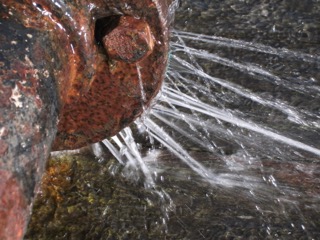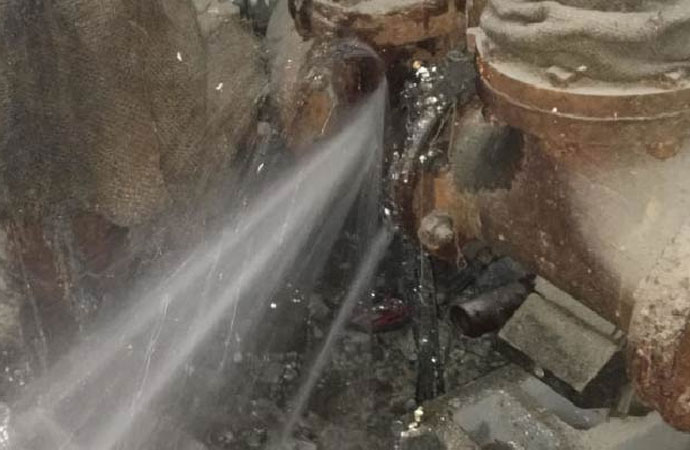Quick Overview: Identifying and Fixing Ruptured Pipes in Your Home
Quick Overview: Identifying and Fixing Ruptured Pipes in Your Home
Blog Article
This great article which follows about How to Prepare for Your Dishwasher Installation is totally interesting. You should investigate for yourself.

A ruptured pipe is a major emergency; you can just stand as you see water you pay very much to rejoin with the earth. In worse instances, you notice a pool on your cooking area floor, which is a terrific journey hazard, especially if you have kids around. If the pipe that burst was in your walls, trouble: you may require to paint that whole section.
Just how can a calamity like a ruptured pipeline be avoided as well as taken care of? Well, by listening to your specialist emergency plumbers as well as following these regulations.
Exactly how do I recognize when my pipes have burst?
Changing water pressures
Pipes do not simply burst in a day. You might have seen that your cooking area faucet or shower doesn't run immediately when you turn the tap. It might pause for a couple of secs and afterwards blast you with even more pressure than usual.
In other instances, the water may seem typical in the beginning, after that decrease in stress after a few seconds.
Wet walls and water spots
Before a pipeline bursts, it will certainly leakage, most times. If this consistent dripping goes undetected, the leakage might graduate right into a large tear in your pipe. One easy means to prevent this emergency is to keep an eye out for damp wall surfaces advertisement water discolorations. These water discolorations will certainly lead you right to the leakage.
Puddles under pipelines and also sinks
When a pipeline bursts, the outflow forms a puddle. It may appear that the puddle is expanding in dimension, and also regardless of the number of times you mop the puddle, in a few mins, there's one more one waiting to be cleaned up. Commonly, you might not have the ability to map the pool to any kind of noticeable pipelines. This is an indicator to call an expert plumber.
Untraceable leaking sounds
Pipeline ruptureds can occur in the most unpleasant locations, like within concrete, inside walls, or under sinks. When your home goes silent, you may be able to hear an annoyingly persistent dripping sound. Also after you have actually examined your shower head and also kitchen area tap, the dripping may continue.
Beloved viewers, the trickling might be originating from a pipe inside your walls. There isn't much you can do about that, except tell a specialist plumber.
Shut down the Water
When water ices up, it broadens in volume by about 9 percent. And it increases with significant force: The pressure inside pipes might go from 40 extra pounds per square inch to 40,000 psi! No pipe can hold that much pressure, so it breaks open. The break might take place where the ice types, but more often, it takes place where water stress discovers a vulnerable point in the pipe. That might be inches or perhaps feet from the frozen area. Locate the water shutoff valve and also shut off the water to prevent more damages. You may also require to shut down the electrical energy as well, relying on where the leaks occurs and also exactly how big it is.
Polluted water
Many people think a ruptured pipe is a one-way electrical outlet. Rather the contrary. As water flows out of the hole or gash in your plumbing system, impurities discover their method.
Your water might be contaminated from the resource, so if you can, inspect if your water tank has any kind of issues. However, if your drinking water is provided as well as purified by the local government, you must call your plumber instantly if you see or scent anything funny in your water.
What do I do when I detect a burst pipe?
Your water meter will continue to run also while your water wastes. To lessen your losses, find the primary controls and transform the supply off. The water mains are an above-ground framework at the edge of your property.
How to Fix & Detect a Leaking Pipe
How Do I Know if a Pipe is Leaking?
Leak detection tests can help you determine if your pipe has a leak. Even if you don’t see an apparent leak, you should still conduct leak detection tests regularly to save water and money—and prevent major damage to your home.
Water meter. It can be helpful to figure out what your usual water meter usage numbers are and then monitor them regularly. To monitor your meter, first, turn off all water faucets in your home. Check the meter and write down the numbers. In a few hours, check the meter again. If the numbers have changed, you have a leak. Water gauge. Use a water gauge to test your water pressure. Your showerhead should produce a certain amount of water pressure based on its model and design. If the pressure is lower than it is supposed to be for that specific showerhead, your home likely has a leak. Puddles. Look inside your bathroom, laundry, and kitchen sink cabinets. Puddles around the cabinets or around toilets, tubs, showers, and washing machines indicate the presence of a leaking pipe. You may also notice loose tiles, peeling or flaking paint, or mold caused by water accumulation. Napkin test. Even if you don’t see any puddles, you may still have a leak. You can test for water leaks in the bathroom, laundry, and kitchen by wiping below-sink connections with a napkin, paper towel, or piece of toilet paper. If it becomes damp, you probably have a leaking pipe under the sink. Discolored walls. Walls that are discolored—usually with brown or yellow stains—or bulging might mean that they have been impacted by water damage caused by a leaking pipe. Smell. A leaky pipe will create sitting water, and over time, that water may develop a musty smell. If your home smells musty, but you can’t locate the source, it may be due to a leak. Steps for Fixing a Leaking Pipe
A leaky drain can be remedied by tightening the pipe base, replacing the drain seal, caulking the rim, and tightening the pipe nut. Similarly, a leaking toilet pipe can be treated by tightening the packing nut. You may also need to replace the valve. A leaky faucet may just need tightening or replacement of the washers. If that doesn’t work, consider replacing your faucet. If your pipe has a hole in it, you may want to use a pipe leak sealer or pipe leak tape. This quick fix for water pipe leaks can also temporarily fix a copper pipe leak. https://www.ahs.com/home-matters/quick-tips/how-to-tell-if-pipes-are-leaking/

I ran across that entry on What to Know Before Installing a Dishwasher when doing a lookup on the internet. In case you appreciated our post plz be sure to share it. We recognize the value of reading our article about What to Know Before Installing a Dishwasher.
Request Service
Report this page